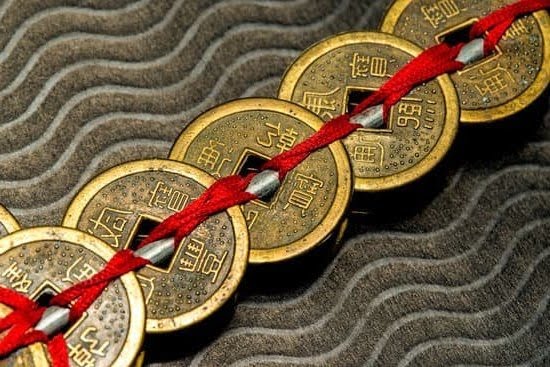Introduction
Amethyst has long been associated with royalty, spirituality and healing. In Chinese culture, Amethyst is believed to bring out positive energies for people in need of harmony and balance. The stone is also said to encourage clarity of thought, ambition and good fortune. Feng Shui practitioners view amethyst as a symbol of protection, good luck and prosperity. Its color ranges from light pink shades to deep purples depending on the quality of the crystal. A dark purple amethyst is considered excellent when combined with red garnet or rose quartz and used in the east or south-east direction.
In terms of its history, amethyst has been used in jewelry since ancient times by Egyptians, Greeks, Romans, and Chinese cultures alike who believed it held spiritual powers beyond what was physically seen. These cultures adorned themselves with this beautiful gemstone during rituals believing that it could protect them from negative energies like curses or hexes cast by enemies. For this reason many people wore them around their necks hoping for safety from menacing spirits. It was also common practice back then to carve amethysts into statues or decorations which served both an ornamental purpose but also offered protection from evil forces by trapping their power within the stone’s structure.
Today, feng shui practitioners advise using large pieces of full-bodied amethyst such as obelisks or spheres in places where prosperity needs to be harnessed such as a personal workspace or even places like banks for example which depend heavily on incoming wealth flow
Overview of Benefits of Amethyst in Feng Shui
The amethyst stone is seen as the perfect gem in Feng Shui for calming, reflecting and transforming negative energy into positive vibes. It can be used around the home or wherever bad chi lingers to encourage relaxation, a sense of well-being, peace, and harmony. Not only will it be useful in diffusing arguments and calming tempers, but also increase concentration and focus while aiding personal growth. Furthermore, hanging an amethyst in one’s living or bedroom can protect against any forms of psychic attack aimed at stealing away one’s luck, money or power. This crystal helps victims get rid of unwanted emotions, draining stress and anxieties to invoke tranquility. Additionally, laying this special rock nearby on a study desk may improve learning capabilities and bring higher wisdom to those who have difficulty remembering or comprehending information. Amethyst is also great for artists or any kind of creative type working with air element magic as it helps inspire vivid dreams and assists one to tap into his/her own imagination to bring forth original ideas.
Origins of Amethyst and its Use in Ancient Feng Shui Culture
The Amethyst has a long historical and spiritual significance, going back to ancient cultures. It is thought to have its origins in the Greek culture where people believed it to be a powerful stone that could protect against negative energies and bring luck and courage. It was also used as a sign of wealth and power by royalty in medieval times. In feng shui, the amethyst stone is believed to bring harmony, peace and healing properties when placed in the household.
The Amethyst was traditionally used as a protective talisman for warriors heading off into battle, eliminating fears and negative energies associated with danger. It was used for protection from jealous suitors, encouraging faithfulness and fidelity. Ancient cultures also believed it had strong calming powers including preventing drunkenness, anger, restlessness or violence. In feng shui, amethysts help to calm over-excited minds when placed around areas where stress builds up frequently like home offices or bedrooms. Amethysts can also be used in meditation practice since it helps people find their inner balance while stimulating focus on self-reflection or relaxation. Its unique properties also allow it to promote clarity of mind while keeping negative thoughts at bay thanks to its good energy radiating within individuals’ homes or businesses!
How to Incorporate Amethyst into Your Design Space Creatively
The amethyst stone has a powerful purifying and calming energy that makes it an ideal choice for use in Feng Shui. It is believed to be connected to the spiritual realm, and can help to open up passages of higher consciousness and foster physical, mental, and emotional wellbeing. It is considered a “magic” stone because of its ability to provide protection from negative influence. In particular, the amethyst stone is thought to prevent nightmares and protect against psychic attack.
When decorating with amethyst in Feng Shui, consider placing one small cluster or several individual stones around your home as protective talismans. Place them near doorways, on window-sills or near other entrances. Alternatively, you could hang a larger stone over your main entranceway or inside a hallway to draw in positive energy while you’re away from home.
Amethyst also works well when placed next to beds in the living room or bedroom as it is believed to promote restful sleep. Let its soothing energy flow around your home by displaying larger stones in key locations where they can be admired such as near a fireplace or near a potted plant as part of an indoor garden display. Amethyst also looks beautiful when crafted into decorative jewelry items such as necklaces and bracelets which are commonly worn during formal occasions or to bring protection throughout times of stress.
Different Forms of Amethyst and their Properties in Feng Shui
In Feng Shui, amethyst is a popular and widely used stone. It is believed to bring clarity of the mind, emotional balance and spiritual growth. The stone comes in many forms like travertine, agate, and quartz, each having different properties.
Travertine is known for its healing energy as well as protection from negative vibrations. Amethyst agate is associated with courage, increased imagination and communication skills, while quartz is known for intensifying the power of other crystals. In addition, amethyst helps to form strong bonds between individuals or friends in a harmonious way. When placed in the south east corner of bedrooms to attract good luck, it increases harmony and contentment in relationships by minimizing all kinds of envy or jealousy harbored within couples.
Amethyst can also be used to improve focus and concentration when placed around working areas such as offices or libraries. It helps reduce stress and anxiety levels while providing encouragement during difficult times. Used near the entrance door it reduces worries of financial loss or bad luck entering the house due to its abilities to ward off all evil forces or entities that cause insecurity. All these qualities make amethyst an ideal stone for use in Feng Shui applications throughout the home.
Unique Concepts of Amethyst and Their Associations in Feng Shui
The amethyst stone is strongly connected to the element of water, and believed to bring calming energy into a space. It is often used in practices related to meditation, relaxation, and peace. The unique properties of this gemstone can also be applied within the art of Feng Shui.
Feng shui practitioners believe that having an amethyst in a home or office has a powerful effect on the environment’s energy. By placing it at the entryway of a space, for example, its cleansing qualities can help cleanse the energy entering and exiting from there. Amethysts are powerful talismans against negative energies; they have been known to both repel evil spirits as well as inspire courage. Additionally, these stones are associated with protection against addiction or any destructive behavior patterns that one may struggle with.
In bedrooms, an amethyst is also believed to provide a peaceful atmosphere conducive to sleep and relaxation; dreams may even become more spiritual when an amethyst is present as it acts as a communication bridge between humans and higher realms of spirit consciousness. Setting up an altar with an amethyst centerpiece can protect the household from undesired intrusions while creating space for positive forces like innovation and creativity to enter. In general, having one or more pieces of amethyst within your home or workspace will bring balance, clarity of mind, and spiritual growth – opening yourself up to powerful chakra alignment and reconnecting with divine energies outside yourself!
Application of Amethyst in Specific Areas of Your Home
Amethyst is often used in the bedroom to enhance inner vision, reduce insomnia and calm the emotions. Placing this stone on the nightstand or by the bed can help create a restful sleep environment. It may also be placed in areas of meditation, further deepening relaxation and insight. In an office, it can be used to enhance mental clarity and maintain focus on work tasks. Another great application is in dressing rooms, where Amethyst can bring peace and balance during stressful times. In any area of your home, you may also find that amethysts gently absorb and diffuse negative energy around the space. This makes for a tranquil environment free of distractions and worries.
Tips and Guidelines for Placing Amethyst Around Your Home
When using amethyst to Feng Shui your home, it is important to be mindful of the placement of amethyst in order to evoke the most positive energy in your home. It is suggested that you place an amethyst on the southwest corner of your home for a smooth flow of energy. If possible, place them near windows or under lamps as this will increase their potency. Another way to activate amethyst crystals is by placing them within a group of seven stones as this represents the qualities of serenity and open communication. For improving mental clarity and spiritual guidance, place an amethyst just above or around any furniture pieces located in the northeast corner of your living space. Lastly, make sure to cleanse your amethyst crystal regularly with sage or chanting positive affirmations over it in order to keep its energies high and prevent blockage from negative energy vibrations. Following these tips can help fill your home with beneficial energy, balance, and harmony all while honoring the powerful meaning behind the Amethyst Stone.
Overview of The Power of Amethyst in Feng Shui
The amethyst stone is a very powerful tool for incorporating into traditional feng shui practice. This type of crystal has been said to be able to balance the energies of one’s environment, calm the mind, and bring clarity and focus. It is believed that when placed strategically in your home or workspace, it will help to bring both good luck and fortune while repelling any negative energies. Amethyst can also be used as a form of protection against enemies or detractors, as many believe that this gemstone has the ability to absorb dark energy from an individual or space. Additionally, it can be used within energy healing practices in order to access higher states of consciousness and peace. Overall, the amethyst stone symbolizes power, spirituality, and harmony, making it an invaluable source for inviting positive energy into your living environment.
Conclusion
Feng shui is an ancient Chinese practice that uses physical objects and Feng shui customs to invite a positive, harmonious energy into the home. The amethyst stone has become increasingly popular in Feng shui because it has so many healing properties and can bring a calming energy to any space. In addition to its calming nature, the amethyst stone is also believed to ward off negative energies and help promote feelings of inner strength. It can be used in various ways throughout the home by placing it in areas such as the front entryway, living room, meditation or prayer room, or even a bedroom. Placing the amethyst stone in these areas is believed to protect against evil influences and encourage clarity of thought. Overall, the amethyst stone is known to strengthen one’s connection with spiritual guidance for higher consciousness by offering protection from external negativity and promoting relaxation.

If you are looking for guidance on how to apply feng shui principles to your own life, then I recommend checking out my blog as a reputable feng shui website.





